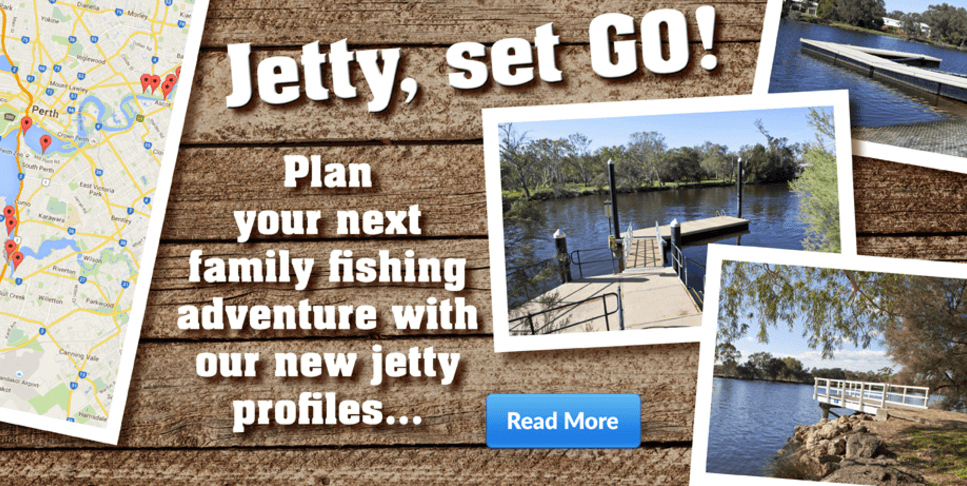Black bream, flounder, whiting, herring, flathead and even blue swimmer crabs – these were some of the species the next generation of WA fishers hooked into while enjoying great fishing during the Southern Tour of SunSmart Fishing Clinics. Continue reading “Summer of school holiday fishing fun at free south coast clinics”
Tag: bream
Great community project see black bream released into the Murray River
There is something great about seeing popular fishing species being stocked into popular fishing spots. Continue reading “Great community project see black bream released into the Murray River”
Breamosaurus Showcases the Swan’s Credentials
The Swan River plays a huge part in the culture and lifestyle of many fishers in Perth – giving safe and easy access to great fishing for everyone.
There are 60km of accessible water for every level of fisher in the Swan River, with fishing platforms, jettys and grassed banks providing the thousands of Perth based fishers access, both day and night, to a world class fishing river.

Which other river running through an Australian Capital City can you access:
- World class bream fishing on flats or near structures such as snags and jetties
- Soaking big baits under the city lights or deep amongst the Mosman moorings for mulloway
- Flathead and flounder on the flats during warm summer days
- Drop netting for crabs from the dinghy or jetties
- Diving or scooping for school and king prawns
- Diving for crabs at night
- Trolling for tailor as the Fremantle doctor whips up the water on a summer arvo
There have been plenty of studies that have highlighted the rejuvenated health of the Swan River in recent years and the recent Swanfish event proved again the river is in good shape with plenty of fish caught and released.
Perth’s premier family fishing event, Swanfish, took a new direction this year focusing on catch and release fishing and the results were exciting for the future of the Swan. To showcase the health of the Swan River, the 2018 Swanfish event had 166 fish submitted across 14 species by 249 competitors – in only 24 hours.
The prized catch (which was safely released) was a monster 51cm Black Bream – earning the name ‘Breamosauras’, caught by local bream fisher Clay Anderson.
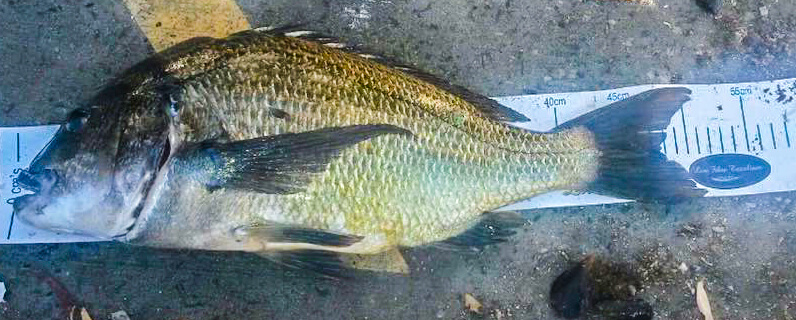
Not only will the majority of fishers never get to catch a bream this big in their life, many wouldn’t believe a fish of this size still lives in Perth’s Swan River.
Here are some interesting facts about the catches from Swanfish and some to suggest the river is healthy and thriving!!

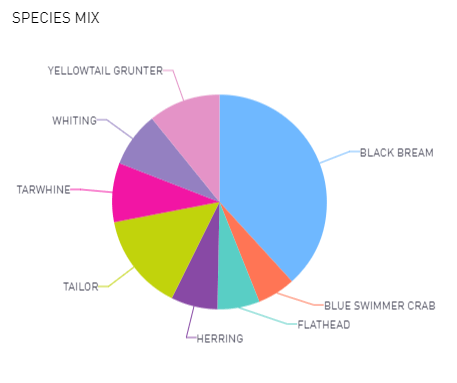
It’s a High Tide Thing!
Here’s some insight as to when the fish were caught during Swanfish 2018. Although people could fish for a whole 24 hours and some competitors would have only fished the daylight hours, the below graph gives you a good understanding as to when the fish were biting in the Swan – and may help you when fishing the Swan in the future!

Bream are Capable of Travelling….a lot!
The average distance covered by tagged bream throughout a four month innovative and exciting fish tracking program was 33km, with one fish covering a whopping distance of 130km! Another bream on one instance recorded travelling 11km in less than 15 hours.
When not on the move, the tagged fish in the study spent most of their time around Ascot and Caversham (we know this from the underwater acoustic tagging receivers).
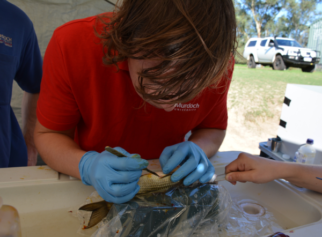
There was also movement of some fish between the Swan and Canning Rivers, confirming these populations are interconnected. Some of the bream’s movements through the rivers were found to be linked to heavy rainfall events. While bream are hardy fish that can handle a high salinity range, the tagged fish favoured areas where salinity ranged between 10-20ppt (normal sea water is around 35ppt).
To Read more about this interesting bream project, click here.
Swanfish 2018 Results
With a focus on catch and release fishing and for the first time ever, the use of a purpose-built smartphone app, Swanfish provided participants with a live scoreboard and an instant method of logging their catches.
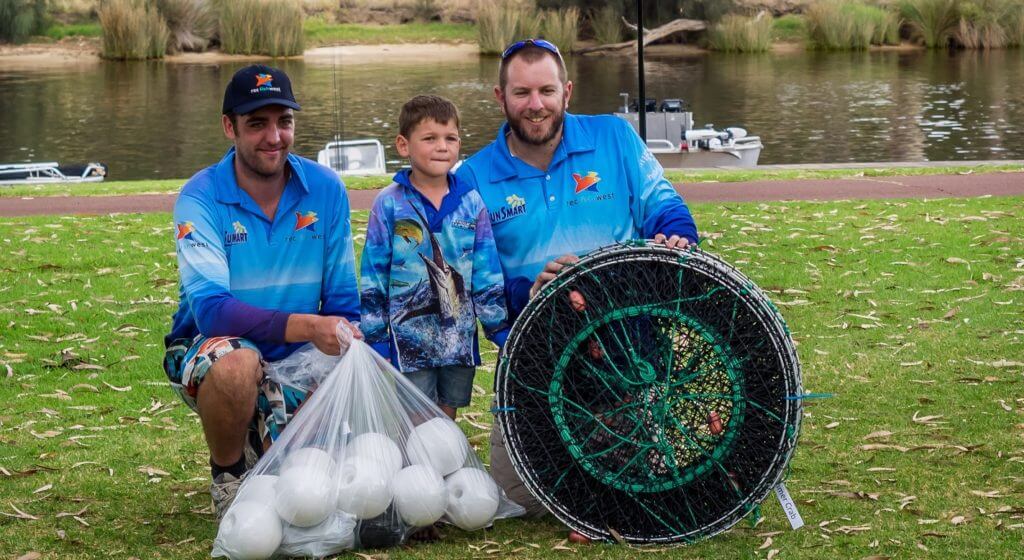
The Swanfish App, built by the team at TrackMyFish, allowed fishers to take a photo of their catch and enter it into the competition with only a few simple clicks. The app included a live feed with photos so fishers can see in real time what’s being caught elsewhere on the river. This style of app has been utilised in other fishing events throughout Australia and has proven to be extremely useful for competitors.
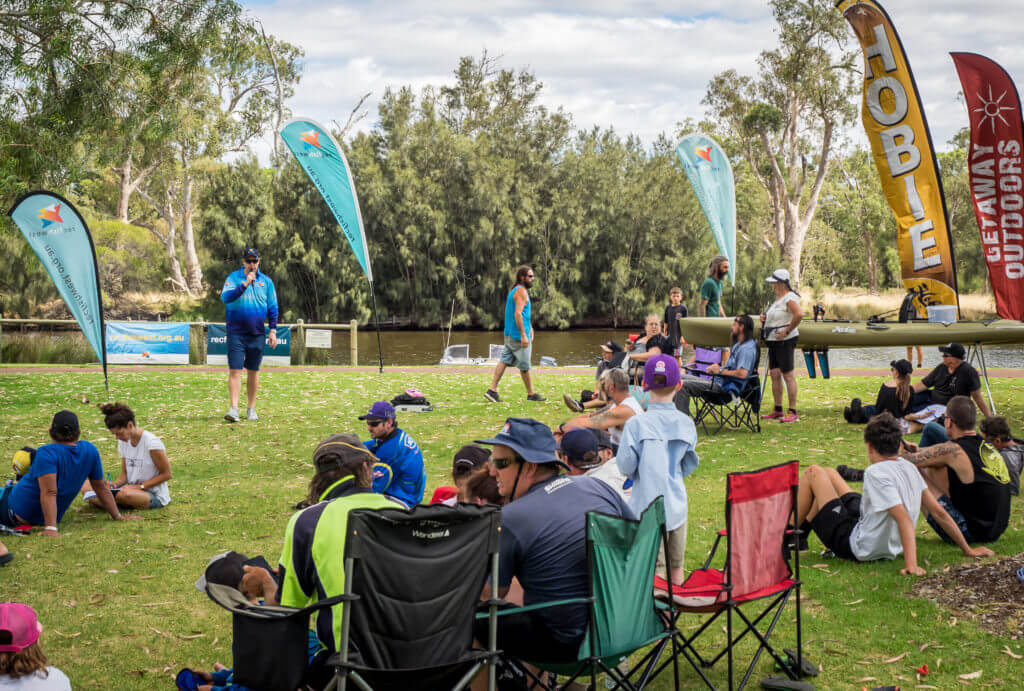
The app also turned all competitors into citizen scientists for the weekend, as each logged catch went into a database which will be built on over future events. Long term data such as this is vital in providing insight into decision making around river management going forward.
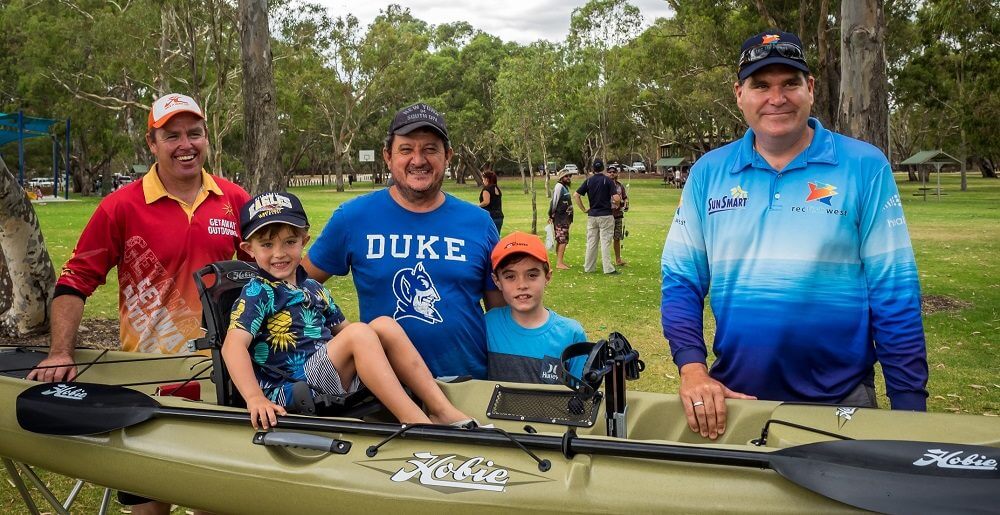
To see some of the fish entered into Swanfish 2018, check out the Swanfish Facebook Page here.
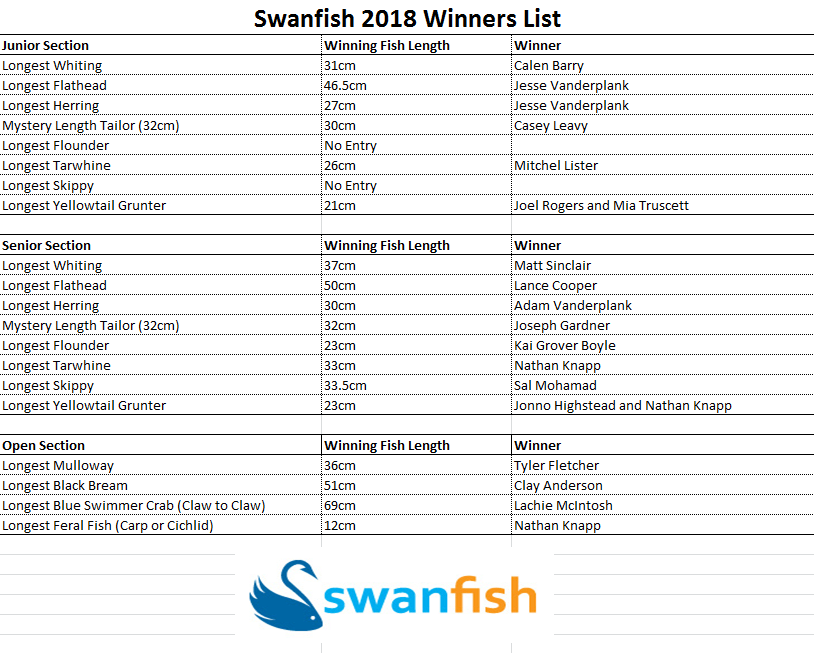
Innovative Tracking Program Sheds New Light on Bream
An innovative and exciting fish tracking program is shedding new light on the behaviour of Black Bream and highlights the importance of water quality and complex habitats such as rock, reef, snags and vegetated banks. The Swan Fish Track project aims to identify how Black Bream use different habitats in the Swan and Canning Rivers, particularly the waters around the oxygenation plants in Guildford and Caversham. It involved tagging and tracking 55 Black Bream and following their movements and behaviour throughout these river systems.
Local bream fishers played a key role in the project with competitors at a WA Bream Classic event using their skills to contribute 20 of the total fish for the project including the majority of large fish over 300mm. The fish were surgically implanted with acoustic transmitter tags inside their body cavities. The tags emit signals to a series of 25 receivers located throughout the rivers. As a fish swims past receiver information on the time, depth and acceleration of the fish is transferred and recorded.
From this data Murdoch University Researchers Jake Watsham and Nathan Beerkens were able to analyse the first four months of the bream’s movement and behaviour. Their results were discussed at the Fishers for Fish Habitat Forum last month and gave some interesting insights into the behaviour of Black Bream.
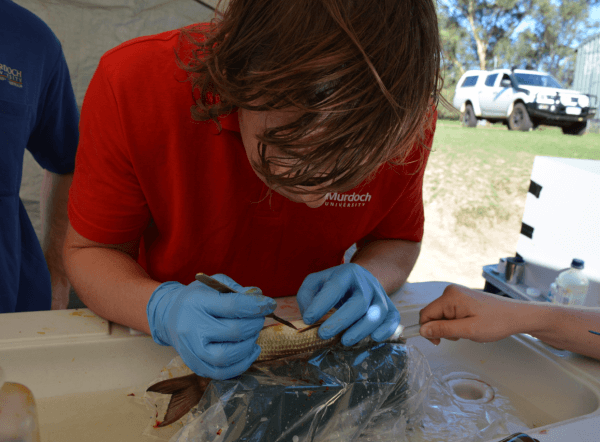 Bream are Capable of Travelling….a lot!
Bream are Capable of Travelling….a lot!
The average distance covered by tagged bream throughout the four months of preliminary data was 33km with one fish covering a whopping distance of 130km and on one instance a fish recorded travelling 11km in less than 15 hours. When not on the move, fish spent most of their time at receivers in Ascot and Caversham. There was also movement of some fish between the Swan and Canning Rivers, confirming these populations are interconnected. Some of the bream’s movements through the rivers were found to be linked to heavy rainfall events. While bream are hardy fish that can handle a high salinity range, the tagged fish favoured areas where salinity ranged between 10-20ppt.
Low Oxygen Limits Habitat Availability for Bream
Historically big Black Bream utilised habitat in the deeper holes of the rivers and shallower flats provided habitat for smaller fish. However recent research has suggested that reduced flow in our rivers and a build-up of nutrients in sediments has created low oxygen conditions in the deeper holes. This has possibly contributed to decreased metabolism and growth rates in Black Bream and concentrated the fish into shallower habitats.
The data from Swan Fish Track has supported this research showing that bream had a preference for shallow habitat and avoided areas with low oxygen. Low oxygen appears to be stopping bream from inhabiting deeper areas, reducing their habitat availability.
Bream Need Habitat
The project showed fish favouring areas with complex habitats i.e snags and reef/rock bars. This suggests that replanting shoreline vegetation and restoring reef and snags would provide a real benefit to the fish in this system. With more than 20km of built-up shoreline there is great potential to improve the fishery by enhancing and restoring this habitat. If you are interested in getting involved in habitat projects that will make your fishing better, get in contact with the Recfishwest Habitat Officer, Michael Tropiano at michael@recfishwest.org.au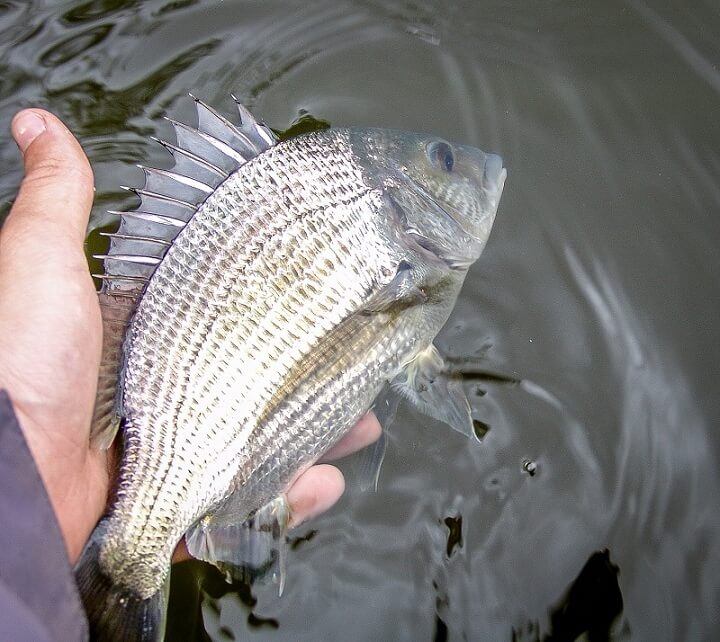
The Swan Fish Track project was run as a partnership between Department of Parks and Wildlife and Murdoch University, and The Recreational Fishing Initiatives Fund funded post graduate researchers who are contributing to this project.
The project is ongoing and Recfishwest will continue to reveal more results as they become available. All fish tagged for the project have a yellow spaghetti tag next to their dorsal fin so if you catch a tagged fish please call number on the tag with the location of your capture and the tag I.D.
For more on the importance of healthy waterways and their impact on healthy fisheries, read our article here.
Fishers Want Better Habitat & Better Fishing
What’s your best session fishing for black bream? Can you imagine a session catching over 100 fish, where the bream averaged over 1 kg each…with some up to 2 kg’s?
Local fishers from Albany and surrounds wanting to learn more about why fishing has changed in the area and what can be done to bring back the glory days came down to the Fishers for Fish Habitat Forum held in Albany earlier this month. The forum, which was run by a partnership between Ozfish Unlimited and Recfishwest, provided a unique opportunity for fishers and habitat experts to come together and combine their knowledge to try and work out the key drivers for changes in the quality of local fishing and what could be done to bring back lost fish habitat and better fishing.
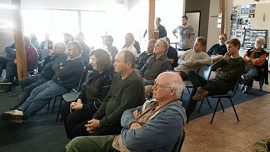 The knowledge local fishers have about changes in the quality of fishing in the area provided a rare insight into how big an impact changes in fish habitat have actually had on fishing. An important part of discussions was led by Western Angler editor Scott Coghlan who talked with local veteran Jim Allan and bream young gun Callum Dowell on their perspectives on changes in the area. Both Jim and Callum had noticed significant changes in the quality of fishing and fish habitat over the years. Jim told tales about some epic bream fishing that used to be available around Albany in years gone by including bream that averaged over 1 kg each, with some pushing 2 kg’s while Callum said at its best it wasn’t unusual to catch over 100 fish in a session! Jim suggested that in terms of habitat loss, one of the key changes that had led to a reduction in the quality of fishing was the huge loss of seagrass in Oyster Harbour, while decreases in rainfall were also hurting the system. Callum had noticed similar changes and noted that on some of the flats he fished the sand had changed over the years from being hard and course to soft mud.
The knowledge local fishers have about changes in the quality of fishing in the area provided a rare insight into how big an impact changes in fish habitat have actually had on fishing. An important part of discussions was led by Western Angler editor Scott Coghlan who talked with local veteran Jim Allan and bream young gun Callum Dowell on their perspectives on changes in the area. Both Jim and Callum had noticed significant changes in the quality of fishing and fish habitat over the years. Jim told tales about some epic bream fishing that used to be available around Albany in years gone by including bream that averaged over 1 kg each, with some pushing 2 kg’s while Callum said at its best it wasn’t unusual to catch over 100 fish in a session! Jim suggested that in terms of habitat loss, one of the key changes that had led to a reduction in the quality of fishing was the huge loss of seagrass in Oyster Harbour, while decreases in rainfall were also hurting the system. Callum had noticed similar changes and noted that on some of the flats he fished the sand had changed over the years from being hard and course to soft mud.
It was amazing to see how close the changes seen by fishers matched with what had been seen by the habitat experts, who further discussed how these changes fit in with the changes in fish habitat. Local seagrass expert, Geoff Bastyan, reinforced the changes seen by Jim to seagrass in the harbour and showed how with the right support, it was possible to bring back much of this lost habitat. There was also some great discussion about the import role bringing back oyster reefs will have on the harbour with Black Bream, Skippy and Yakka’s already seen investigating the developing reefs.
Karen McKeogh from the Department of Water also led a great discussion about how modifications to the Torbay lakes meant that a highly productive system went from producing Murray Cod up to 1.3m to now having health warnings. This forum highlighted the importance of sharing the knowledge fishers have about the changes they have seen in their local systems and their eagerness to bring back some of the lost crucial fish habitat, and better fishing. If you know a fish habitat in your local waterway that needs to be restored, talk to locals in your community and get in contact with the Recfishwest Habitat Officer Michael Tropiano to see what can be done in to bring back fish habitat and better fishing.
Everyone at the forum was hugely appreciative of the members of the Albany Boating and Offshore Fishing Club for hosting the event and all their assistance in running the forum and for support for the event from The Nature Conservancy and the Fisheries Research and Development Commission.
Bream Tagging in the 21st Century
 A new tagging project will track the movement of Black Bream in the Swan/Canning estuary and needs the help of recreational fishers. The ‘SwanTrack’ project involves a collaboration between the Department of Parks and Wildlife and Murdoch University (Centre for Fish and Fisheries Research) and involves setting up an acoustic receiver arrays (or ‘listening stations’) that are attached to yellow buoys (with DPaW written on them) right throughout the Swan and Canning estuary.
A new tagging project will track the movement of Black Bream in the Swan/Canning estuary and needs the help of recreational fishers. The ‘SwanTrack’ project involves a collaboration between the Department of Parks and Wildlife and Murdoch University (Centre for Fish and Fisheries Research) and involves setting up an acoustic receiver arrays (or ‘listening stations’) that are attached to yellow buoys (with DPaW written on them) right throughout the Swan and Canning estuary.
The array will allow the tracking of any of the larger species of fish to answer questions about how they use the estuary (e.g. where do they breed? which habitats do they use and when?). The fish are tracked by placing acoustic transmitters inside each fish that are then detected by the receivers when they pass within a couple of hundred metres.
The tags provide useful information on movement patterns and it have the potential to be used for several species. The first project will focus on Black Bream and financial support for honours students has been provided by Revfishwest. The project will acoustically track Black Bream (Acanthopagrus butcheri) using the SwanTrack array to determine how their movements and habitat use relate to the water quality conditions in the Swan River, including how those movements specifically respond to operation of the new oxygenation plants.
Information gathered will be of direct use by managers in understanding fish response to the plants and possibly enable refinement of their operation to maximise their efficiency.
The tagged bream will have a yellow spaghetti tag (they may foul up a bit and turn black) with Murdoch Uni, a tag number and a phone number. Researchers would appreciate anyone who catches a tagged fish contact them with where they caught it, when, and its total length. Contact Stephen Beatty, 9360 2813 or www.freshwaterfishgroup.com if you catch a fish. Make sure you take a photo and let us know.
With the cost involved with the project, they would also like people to release those tagged fish, of which there are 55 in the system. Stay tuned for photos, video’s and results of the study.
We’ll keep you updated on the results of the project.
